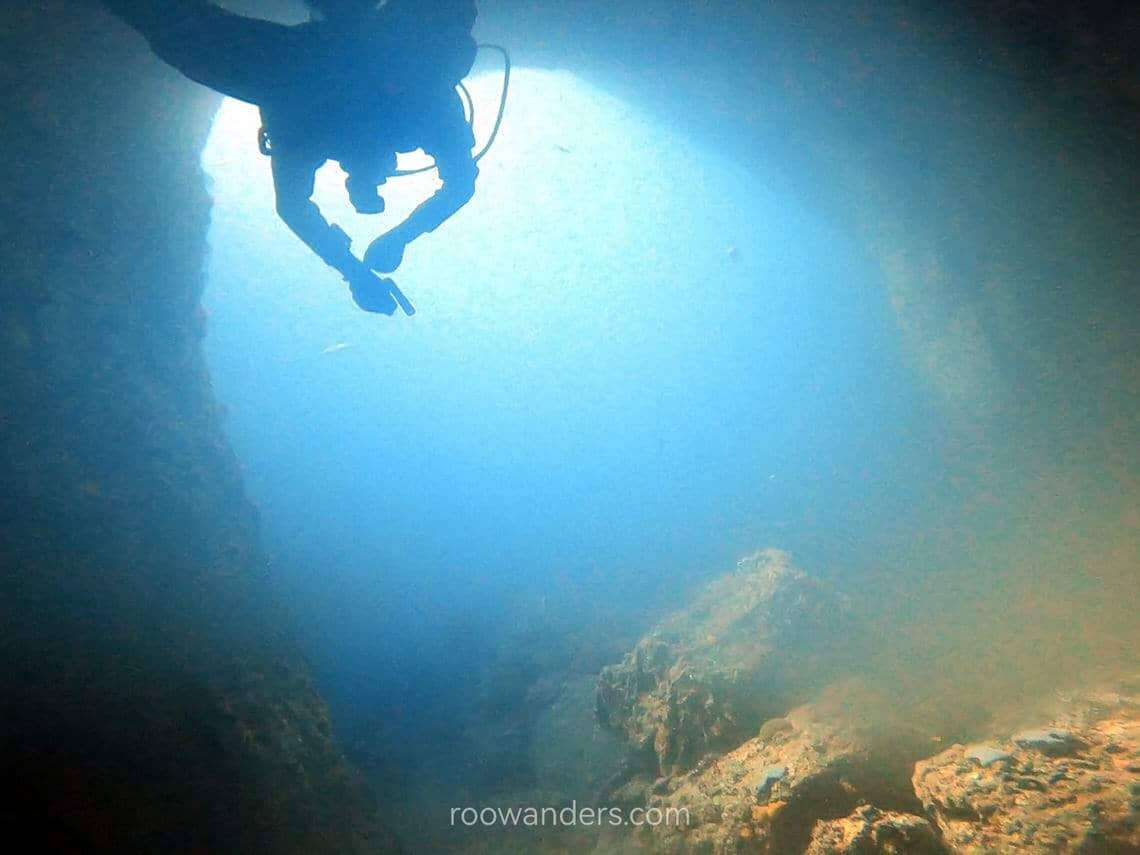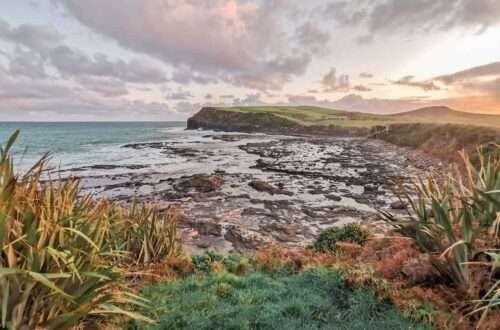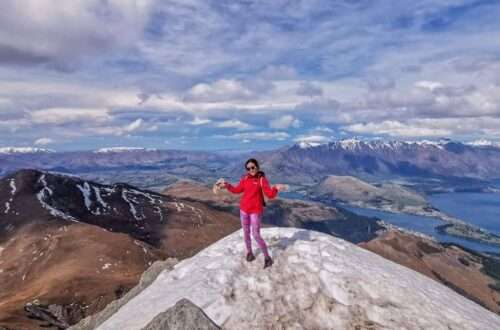
Diving in The Poor Knights Islands | New Zealand
Who would have thought that I would be doing some scuba dives in, of all places, New Zealand, in particular, the Poor Knights Islands?
A supposedly six-month-long working holiday was incredulously lengthened to two years thanks to the pandemic. And when we had that much time in a border-closed NZ, what better way to spend it than ransack all the attractions this country has?
Diving in the Poor Knights Islands was indeed an unforgettable experience for someone from the tropics!
I dived in Mar 2021 as part of my five-day campervan adventure in the Northland. This post may be updated periodically.

Poor Knights Islands
The Poor Knights Islands is a group of islands east of Northland. Its nearest town, Tutukaka, is about three hours from Auckland, or 30 mins from Whangarei.
The best way to reach the islands is by boat from Tutukaka. We signed up for a day’s package of two dives with one of the dive shops set up by the bay. For non-divers, there is the option of snorkelling or paddling.
First Dive: Middle Arch | 50 mins | 25 m
Sights: Mediocre vis (10 m), usual fish, nudibranch, lots of kelp, a stingray
Our first dive site was an hour away from the dive shop. The middle arch, suitable for divers of all levels, was perfect for refreshing my diving skills, which had become a little rusty.

But the giant leap out was still terrifying for me, and I sank like a dead weight. My last dive was almost a year ago in the tropical waters of Malaysia, and diving in The Poor Knights felt foreign. We were in full suits but diving in frigid 16 dC water. It took me some time to remember my BCD and calm my pounding heart.
Eventually, we managed to enjoy the freedom of the underwater world. While there was nothing particularly bold or colourful to see, we had the thrill of squeezing between rocks and observing our guide breathing in from a big bubble trapped underneath a boulder.
My recollection of the dive was as misty as the casing of my GoPro camera. If not for the account provided by an expert diver, I would not have remembered the yellow frog, let alone entering Bernie’s cave.


Islands Tour
After our first dive, our captain took us on a tour of the islands. We explored an arch and ventured into a massive sea cave, which I later discovered is the world’s largest with a volume equivalent to 110 million 2 L milk cartons.
The captain blasted the boat’s horn in the cave, and the echo was incredible, demonstrating the cave’s chamber effect.
We then headed out of the cave and towards our second dive site – a mixture of anticipation and intimidation for what is to come next.
Second Dive: Northern Arch | 50 mins | 28 m
Sights: Mediocre vis (10 m), fleets of stingrays, steep valley with corals and kelp
Our briefing for this dive didn’t sound relaxing.
There would be a 40 m steep drop down. Mind your buoyancy and stick to the wall.
But with one less iron weight and the first dive to test my gear, I was in a much more comfortable position to tackle the ‘40 m steep drop’ danger.
As we sank by a wall that led to the sandy grounds, I saw fleets of stingrays gracefully gliding past us. Corals and kelp lined the wall – a perfect playground for this into macros. Our guide and other experienced divers led us to various sea creatures and nudibranchs nestled within.
Another interesting aspect of this dive was the slight temperature difference within the currents. I could feel the warmer water coursing above or below the cooler one.


While researching notable dive sites in the northern part of the Poor Knights Islands, I came across an entry on the Northern Arch, which seemed intimidating in hindsight. I’m glad to have enjoyed the dive and lived to tell the tale!
Ending
Big apologies if my account of diving in the Poor Knights Islands lacks the depth of information that elite divers can provide. As I researched the area, I came across DiveHQ‘s comprehensive summary of popular dive sites, as well as Ian Skipworth‘s stunning photos and narratives of deep dives exceeding 40 m. As a beginner diver, the thought of venturing beyond 30 m is daunting.
However, if you are a confident diver with time and some money to spare, go for it!
For me, diving in New Zealand was a nerve-wracking yet ultimately rewarding experience.







